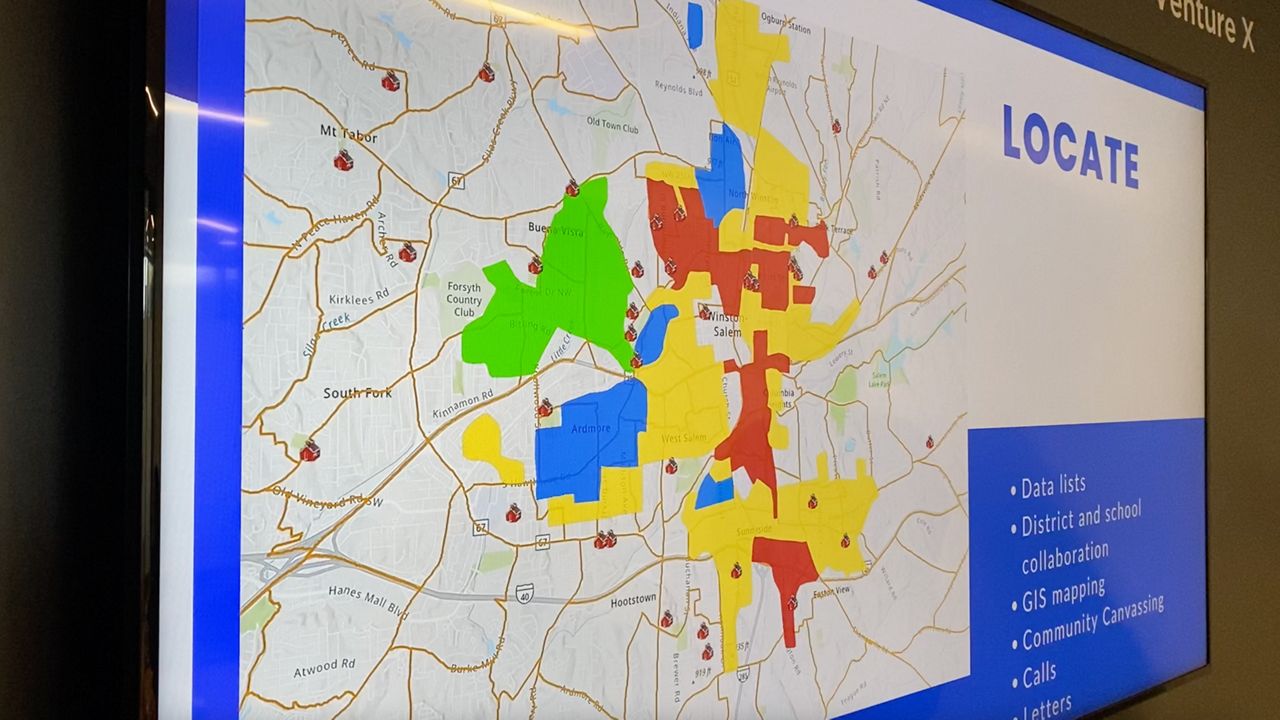DURHAM, N.C. — There are about 12,000 missing students in North Carolina, according to a recent analysis of data from 2019 to 2022 by The Associated Press and a Stanford University Project.
The students are described as “missing” because they aren’t showing up for school, but they haven’t moved or switched to home school or private school either. So where are they and what’s being done to get them back in class?
What You Need To Know
According to a recent analysis, there are about 12,000 missing students in North Carolina
The students are classified as “missing” when they have about six unexplained absences from school
The absences may be due to lack of transportation, a student working a job to support their family or a caretaker’s challenging job schedule
One Durham company, Teach Tech U, is helping school districts find and reconnect missing students
“After the pandemic I think it's very clear that we have lost some of the students, and we have to make sure that we do the effort to bring them back,” Hope Davis, the founder and chief technology officer of Teach Tech U, said. “The school districts are so overwhelmed that they need assistance and sometimes the students can fall through the cracks, because not because they're not doing their job, but because it's just overwhelming.”
For the past two years, Davis and her team have been helping school districts including Winston-Salem/Forsyth County find students that aren’t showing up for class. Many of the students classified as “missing” have about six unexplained absences.
Some common situations that Davis and her team see when it comes to school absences include a family not being able to find transportation, an older student picking up a job to help support their family or a caretaker having a scheduling conflict with their job.
“Let’s be honest that most of the time when a student is missing or unenrolled, they are a nontraditional student. There's something going on in their particular home or their journey in their education that has created particular challenges that we understand, and we can respond to,” Davis said.
To find these students, they use a method Davis developed known as Project LEAR which stands for locate, engage, activate and retain.
“We send out canvassers or locate individuals that we call and try to find out what the student is doing as far as if they're enrolled in another district, if they're out of state, if they've decided to drop out, whatever the situation is that we find for them,” Davis said. “If and when we find them, which we have a good result as far as finding them, we talk to them in the engage part. The engage part is trying to figure out what are the challenges.”
They’ve found that sometimes the families are just looking for someone other than the school district to guide them and listen.
“It's an absence but behind the absence is a story. Sometimes, as I said, with the districts being overwhelmed, they can't always have time to hear all of the stories. So our part of it is to make sure that we can be there for them,” Davis said.
Davis says the concept of missing students isn’t new but believes the pandemic and remote learning helped shine a light on the problem.
“I think if you asked most educators, we knew that we were coming to a head before the pandemic with students who were kind of disconnecting and checking out. And then you bring the pandemic in and you have virtual training, which has its problems. You have that coming into the space. And so then you have students who were kind of already about to check out. They were kind of removed from the equation,” Davis said.
She’s hoping the work they’re doing will help reconnect those students and help them understand the choices they have so they can be successful.

“Even if their education means getting a GED, even if their education means, you know, going into technical school, even if that means having an alternative to the district that they're at, maybe a virtual program, they deserve to have the education, and they need to have that chance,” Davis said.
Davis and her team are also collecting different data as they find and help these missing students which can help identify patterns. For example, they’re using a mapping tool that has helped them figure out if students from particular neighborhoods are often classified as “missing.” Then they can set up community outreach events in those areas.
The analysis by The Associated Press and Stanford University looked at data on school absences from 21 states and, of those states, North Carolina has the fifth highest number of missing students.
